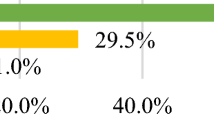Abstract
Recently, various personal information in daily life is stored in mobile devices with sensors. This information reflects heterogeneous aspects of personal life history. People have a tendency to record precious memories from the information in their life. However, it is difficult to extract and summarize the memories from the information. There are many useful traditional ways, such as photograph, video and diary, to record important memories. Especially, writing a diary is beloved as an effective method for a long time because of its effectiveness, remembrance, and empathy of storytelling. This paper proposes a Petri-net based method that organizes mobile contexts to an understandable and interesting story in cartoons. Petri-net based storytelling approach reduces the uncertainty in mobile environment and increases the diversity and causality of a story. A generated story from mobile contexts is compared with personal life history for confirming the usefulness. Also, it is compared with the other method in previous work.
Similar content being viewed by others
References
Smeaton AF, O’Connor N, Jones G, Gaughan G, Lee H, Gurrin C (2006) SenseCam visual diaries generating memories for life. Poster presented at the memories for life colloquium 2006
Raento M, Oulasvirta A, Petit R, Toivonen H (2005) ContextPhone: a prototyping platform for context-aware mobile applications. IEEE Pervasive Comput 4(2):51–59
Aizawa K, Hori T (2003) Context-based video retrieval system for the life-log applications. In: Proc. of MIR 2003. ACM, New York, pp 31–38
Gemmell J, Bell G, Lueder R (2006) MyLifeBits: a personal database for everything. Commun ACM 49(1):88–95
Ventura D, Brogan D (2002) Digital storytelling with DINAH: dynamic, interactive, narrative authoring heuristic. In: IFIP first international workshop on entertainment computing, May 2002, pp 91–99
Korpipaa P, Mantyjarvi J, Kela J, Keranen H, Malm E-J (2003) Managing context information in mobile devices. IEEE Pervasive Comput 2(3):42–51
Mantyjarvi J, Seppanen T (2003) Adapting application in handheld devices using fuzzy context representation. Interact Comput 15(4):521–538
Siewiorek D, Smailagic A, Furukawa J, Krause A, Moraveji N, Reiger K, Shaffer J, Wong FL (2003) Sensay: a context-aware mobile phone. In: IEEE int symposium on wearable computers, pp 248–249
Sumi Y, Sakamoto R, Nakao K, Mase K (2002) ComicDiary: representing individual experiences in a comics style. In: UbiComp 2002: ubiquitous computing, pp 329–336
Cho S-B, Kim K-J, Hwang K-S, Song I-J (2007) AniDiary: daily cartoon-style diary exploits Bayesian networks. IEEE Pervasive Comput 6(3):66–75
Hwang K-S, Cho S-B (2006) Modular Bayesian networks for inferring landmarks on mobile daily life. In: Lecture notes on artificial intelligence, vol 4304, pp 929–933
Theune M, Faas S, Nijholt A, Heylen D (2003) The virtual storyteller: story creation by intelligent agents. In: Proceedings technologies for interactive digital storytelling and entertainment TIDSE, pp 204–215
Meehan J (1976) The metanovel: writing stories by computer. PhD thesis, Dept of Computer Science, Yale University
Aylett R (1999) Narrative in virtual environments—towards emergent narrative. In: Proceedings of the AAAI fall symposium on narrative intelligence, pp 83–86
Propp V (1968) Morphology of the folktale. University of Texas Press, Austin
Correira A (1980) Computing story trees. Am J Comput Linguist 6(3–4):135–149
Lang R (1999) A declarative model for simple narratives. In: Proceedings of the AAAI fall symposium on narrative intelligence, pp 134–141
Riedl OM, Young MR (2006) From linear story generation to branching story graphs. IEEE J Comput Graph Animat 26(3):23–31
Ushiama T, Watanabe T (2004) A life-log search model based on Bayesian network. In: Multimedia software engineering, proceedings of IEEE 6th int symposium, pp 337–343
Choi K-S (2003) CoreNet: Chinese-Japanese-Korean wordnet with shared semantic hierarchy. In: Natural language processing and knowledge engineering, pp 767–770
Peterson LJ (1981) Petri net theory and the modeling of systems. Prentice-Hall, Englewood Cliffs
Brom C, Abonyi A (2006) Petri nets for game plot. In: Proceedings of AISB artificial intelligence and simulation behaviour convention, Bristol, vol 3, pp 6–13
Lima P, Gracio H, Veiga V, Karlsson A (1998) Petri nets for modeling and coordination of robotic tasks. In: IEEE int conference on systems, man, and cybernetics, vol 1, pp 190–195
Di Febbraro A, Sacone S (1998) Hybrid modelling of transportation systems by means of Petri nets. In: IEEE int conference on systems, man, and cybernetics, vol 1, pp 131–135
Chen Y-L, Hsu P-Y, Chang Y-B (2008) A Petri net approach to support resource assignment in project management. IEEE Trans Syst Man Cybern, Part A 38(3):564–574
Blabanovic M, Chu LL, Wolff JG Storytelling with digital photographs
Horvitz E, Dumais S, Koch P (2004) Learning predictive models of memory landmarks. In: 26th annual meeting of the cognitive science society, Chicago, pp 1–6
Aizawa K, Tancharoen D, Kawasaki S, Yamasaki T (2004) Efficient retrieval of life log based on context and content. In: Proceedings of the 1st ACM workshop on continuous archival and retrieval of personal experiences, New York, USA, pp 22–31
Abowd DG, Dey KA, Brown JP, Davies N, Smith M, Steggles P (1999) Towards a better understanding of context and context-awareness. In: Proceedings of the 1st int symposium on handheld and ubiquitous computing, pp 304–307
Author information
Authors and Affiliations
Corresponding author
Rights and permissions
About this article
Cite this article
Lee, YS., Cho, SB. Exploiting mobile contexts for Petri-net to generate a story in cartoons. Appl Intell 34, 1–18 (2011). https://doi.org/10.1007/s10489-009-0175-x
Received:
Accepted:
Published:
Issue Date:
DOI: https://doi.org/10.1007/s10489-009-0175-x




